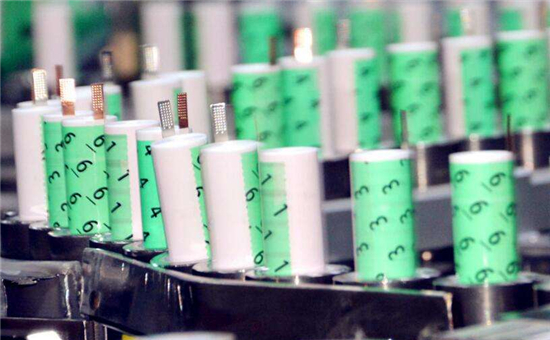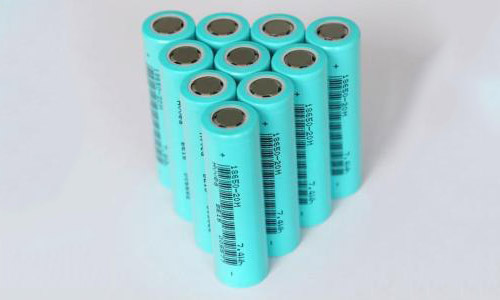Materials Processing for Lithium Ion Batteries
Nov 04, 2019 Pageview:1170
What is inside a lithium ion battery?
Lithium-ion batteries are of all shapes and sizes nowadays. However, no matter the size or the shape of the battery they all look the same inside. In any given Li-ion battery pack there are certain things that are present:
· Lithium-ion cells. They can either by cylindrically shaped like the conventional AA batteries or they can be prismatically shaped.
· Temperature sensors to monitor the temperature of the battery. Overheating can have catastrophic results.
· Voltage converter and Regulator circuit. This is to maintain safe levels of the voltage and the current inside the battery pack.
· Voltage tap, which acts as a monitor for the energy capacity of each individual cell inside the battery pack.
· Battery charge state monitor. Which is a small computer that handles all the charging process. It makes sure the batteries are charged as quickly and as safe as possible.
· An additional, optional shielded connector is sometimes present inside the battery pack, it allows the power and information to flow in and out of the battery pack.
When charging or even during the usage of the battery, if it gets too hot, the computer (Battery Charge State Monitor) will shut down the power flow in an attempt to cool things down. If you try to use your device while in this hot state, this computer will prevent you from using it, and will even prevent you from powering on the device itself.
The Lithium-ion Cells
The lithium-ion cells have an outer case that is made of metal. It is important to use metal in the li-ion cells as the battery is pressurized. The metal casing has what is called a vent hole. Which is basically a pressure-sensitive hole. In case the battery gets too hot that there is a risk of an explosion, this vent hole releases the extra pressure helping to rescue the situation.
Inside the metal case, there are three thin sheet layers that are:
· A positive electrode.
· A negative electrode.
· A separator between the two of them.
These three thin sheets are submerged in an organic solvent, mostly made of ether. That solvent acts as the electrolyte for the battery.
How do you make a lithium ion battery?
Creating a Li-ion battery follows some simple steps:
Electrode Preparation
· In this step, the material that will be coated on the anode and the cathode is mixed and prepared.
· Raw metallic materials, mostly aluminum, is loaded into the coating machine.
· Thin layers of Lithium and Carbon are then applied and added to the machine.
· Through a continuous process, the material is fed to an oven where Carbon is being treated.
· After the oven process, the product is fed to two separate lines where the anode and the cathode are being fabricated each having its own line.
· After the electrodes (anode and cathode) are fabricated, they are fed to a machine where they are being squashed to thin layers so that they can be more foldable.
· The final step of this process is the cutting process where the electrodes are cut to the proper width specified by the manufacturer.
Electrode Creation
· In this process, the electrodes are taken and rolled to the proper size.
· Once the anode and cathode are cut to the perfect size, they are matched together in pairs of exactly equal sizes.
· After that, a thin layer is inserted between them (the separator).
· The whole three layers (the anode, the cathode, and the separator) are folded together in a semi-automatic machine.
Electrolyte insertion
· After preparing the electrodes in the previous step. Housing for them is made.
· Plastics or PVC materials are used to make the housing for the electrodes.
· The electrodes are then inserted into those housings.
· They get thermally welded together on three sides, while the fourth side is left open.
· Via the open side, the electrolyte is inserted onto the whole setup.
· After that, the open side is sealed.
Now you have a Li-ion battery that is ready for its first charge.
Manufacturing challenges of lithium ion battery
Lithium ion batteries have great potential for enabling the electrification of automation, diversity of energy sources and enabling large amounts of grid-scale energy storage. However, the cost of manufacturing Li-ion batteries on a large scale is so high it prevents manufacturers from seeking this dream more quickly.
If we look at the automotive market and electric vehicles, the cost of lithium-ion batteries is much higher than what that market could accept. It is high to the point that electric vehicles have not reached the point to replace conventional cars just yet. They are still more expensive.
Cost reduction is possible through something called the optimization of manufacturing schemes.
Another thing for cost reduction is the replacement of the NMP electrolyte inside the li-ion batteries with water. The cost of water as a solvent is negligible when compared to the NMP compound. Moreover, water is not flammable nor it has any flammable fumes, which makes it the safer choice than the NMP. The problem that faces the manufacturers with water is that water is a polar solvent, and what is needed in the battery is a non-polar solvent like the NMP. However, making water a non-polar solvent can be done via some chemical reactions and additives to it.
Researches are now focused on how to reduce the cost of the Li-ion batteries. We predict that the future holds great expectations and nearly, the cost will be so minimal that Li-ion batteries will be used everywhere, from the simple remote control to an aero plane.
- Prev Article: Lithium Ion Battery Anode and Cathode Materials
- Next Article: Can you charge lithium batteries with a NiCD charger?
Leave Message
Hottest Categories
-
Hottest Industry News
-
Latest Industry News













